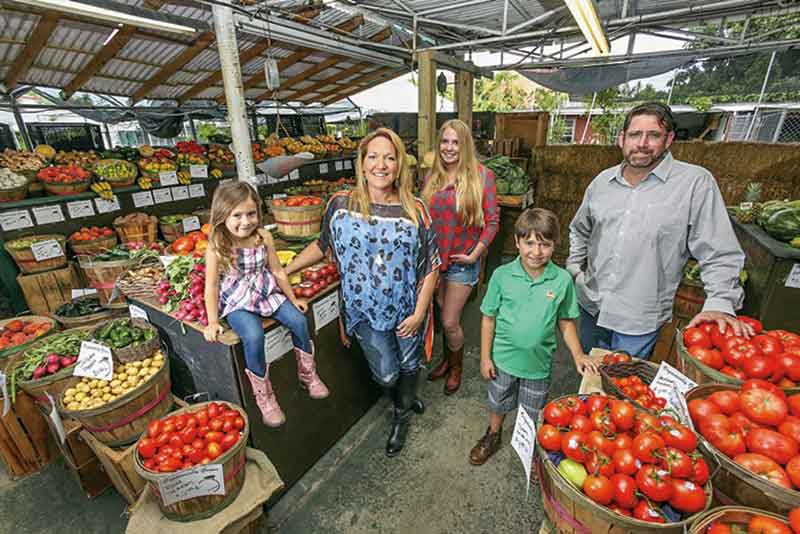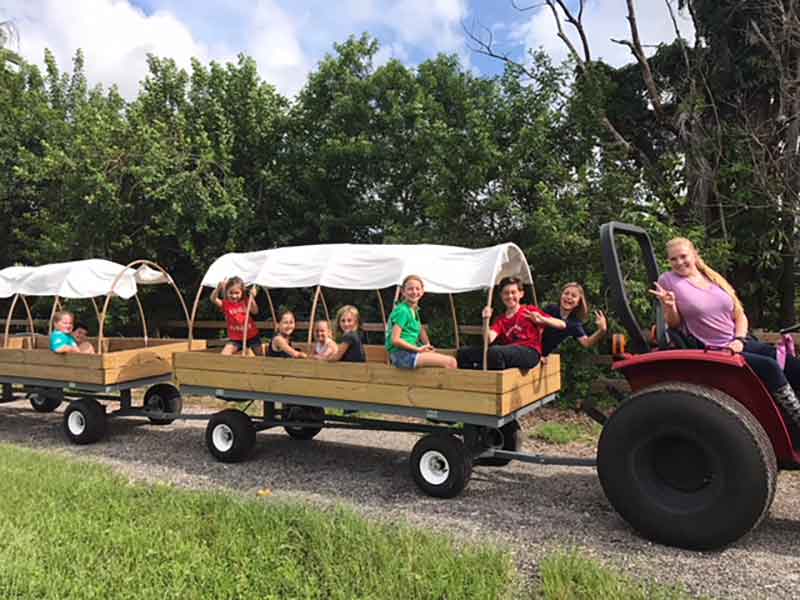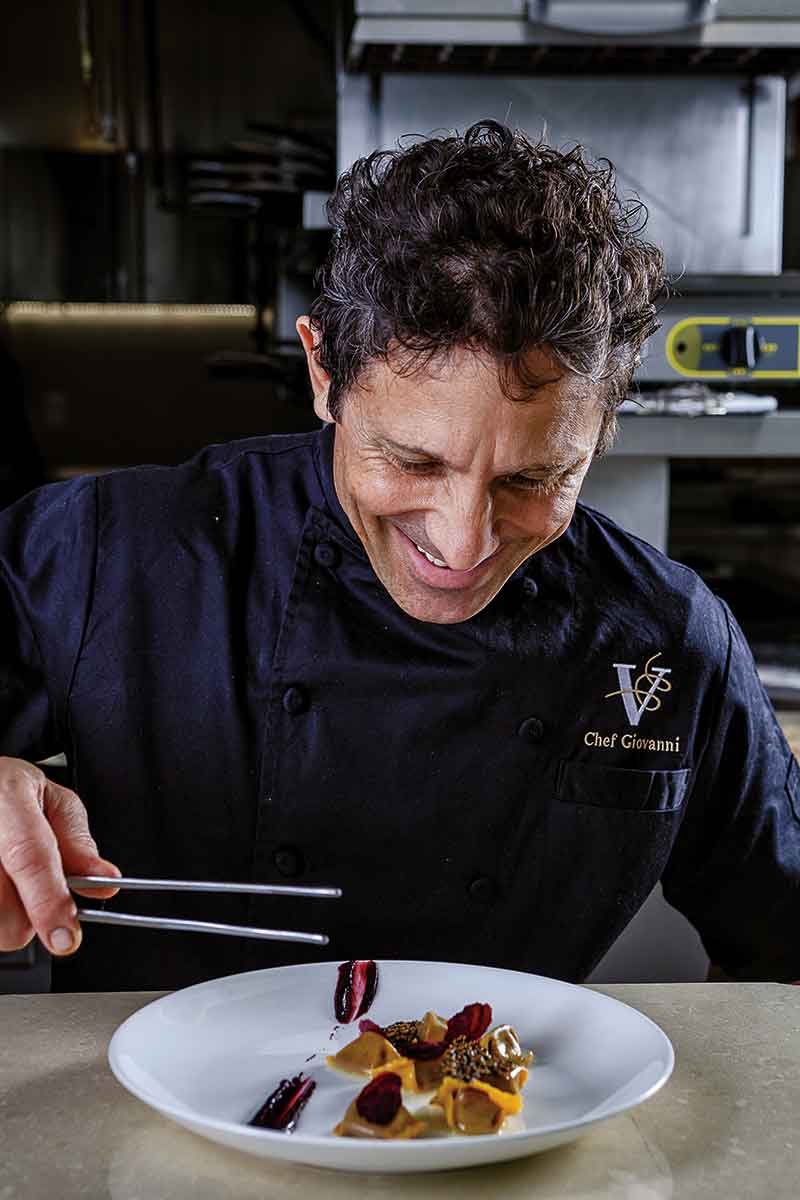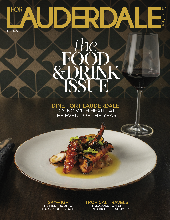
It was 2008—the economy crashed, and the earth seemed to open up and swallow everyone’s livelihood. Businesses shuttered and people in lucrative industries found themselves jobless.
The Marandos were among them. After working in construction, the business of growth, for years, Chelsea and Fred Marando were out of work. They were counting pennies, sticking to a strict budget, living without insurance.
“We had very successful careers, to one day kind of finding yourself in the unemployment line. It was very humbling and a little bit scary,” Chelsea Marando says. “What better to do than grow beans and maybe some tomatoes and something to offset?”

She started writing about gardening for pamphlets and community newspapers. She then took a composting class and a master naturalist program, discovering how much she loved learning about farming and working the land. With the construction company closed, the Marandos turned a piece of property into a farming market.
A decade later, the family is the proud owner of Marando Farms & Ranch. While most associate Florida with its tourism and theme parks, theirs is one of more than 47,500 farms in the Sunshine State, together producing billions of dollars worth of agriculture every single year. Half the agricultural land in Florida is used for cattle, and there’s no end to the number of dairy farms.
With so much access to local produce, why don’t Floridians realize our agricultural strength?
The Numbers
“I look out the window and I see coconut trees,” Albert Williams says. “But I see money on the coconut tree.”
An associate professor of finance and economics at Nova Southeastern University, Williams has a long history of studying agricultural economics, starting in his home country of Belize. It’s his mission to understand how agriculture impacts the economy of the local community, and then to spread the word about it.
While tourism is the number one contributor to the Sunshine State’s economy, agriculture comes in second, producing $160 billion every year, according to the University of Florida.
That’s thanks to all those fields of sugar cane, oranges, winter vegetables and exotic fruits and vegetables. It also translates to a lot of jobs: in Broward County, agriculture employs more than 140,000 people. Further south in Miami-Dade, home to even more farmland, the number is more than 250,000. In the state as a whole, 1.6 million people work in agriculture.

For Williams, a scenic drive is not down the beach, but US 27, where he can see the acres of sugar cane and oranges. Continuing north, dairy farms and cattle ranches lend to Florida being a big producer of beef. Here in South Florida, the farms are smaller, but farmers are getting creative in building urban farms and greenhouses. They also may not grow fruits and vegetables, but landscaping plants for a market asking for native greenery.
“People like to think we’re not an agricultural state. That’s a misnomer,” Williams says. “Somewhere along the line, we have to educate our people that agriculture is huge huge huge here.”
The CSAs
As more and more cities are creating farmers’ markets for their residents to enjoy on the weekends, you’ll often find a common factor: they’re closed during the summer.
But there’s another way to support local farmers: community-supported agriculture, or CSAs. With these programs, customers can order directly from farmers and get a box of goods every week. Each week is different depending on what’s in season and what the yield was at the farm. With more and more people participating in CSAs, the farmers are supported and families have a wealth of access to delicious fruits and vegetables all year round.
That’s why Beckyjo Bean, the self-proclaimed “chief bean” of Bean’s Greens, does what she does. Taking the conventional CSA and expanding it to a multi-farm operation, the Pompano Beach-based company works with up to seven farms every week to collectively compile boxes of homegrown goods for customers.

“You can actually talk to your farmer and make requests for stuff,” Bean says. “Not that he can always do it, but if everyone in the CSA wanted mini peppers, then the farmer would be growing them. I’m already talking to the farmers about what’s happening next year.”
It all started when Bean was assisting a friend who needed help eating organic. Bean went on the hunt for a CSA, developed friendships with local farmers and wholesalers, then created her own CSA. Ten years later, she’s on the road picking up goods from only local farms, some with just a few acres of land. Every week, customers open their boxes to find produce like Swiss chard, arugula, microgreens, Florida lettuce, mangoes, black sapote, baby bananas, heirloom tomatoes, squash, zucchini, cauliflower and more.
“You’re supporting the farmers’ growing season,” Bean says. “I get [food] from multiple farms so that there’s actually more variety and it supports each of those farms.”
The best part of the CSA? Everything you get in your box was picked no more than 48 hours before. Also, Bean takes measures to ensure that the farms who participate have ethical farming habits. While many of them are not certified organic—it’s expensive to get that distinction from the government—they do follow the practices.
“Most of my farms have never used pesticides, which means sometimes they lose their crops,” Bean says. “Our tomatoes taste like tomatoes; they don’t taste like water. That’s the difference: the food tastes like it’s supposed to taste.”
The Farmers
Chelsea Marando of Marando Farms & Ranch grew up in western New York. Amish and Mennonite communities were close by, and on Wednesdays she remembers the town going out to the auction house. There, families would buy milk, pies, fruits, vegetables and livestock.
“It was a big gathering place on Wednesdays; the whole town was there. That was the way I grew up,” she says.
When she and her husband found a second career in farming, they’d get up at 3 a.m. on Fridays to make their way to Central Florida for crops to bring back to their 10-acre farm and market. Now, they grow their own fresh greens with hydroponics and bags — all above-ground gardening.
But as people grow accustomed to having everything from clothing to car parts to food delivered to their front doors, farmers are having to adjust and diversify their business. With fruit and vegetable sales declining in recent years, the Marandos have added a petting zoo, U-pick experiences and farm-to-fork dinners. They also open up their farm for special events like weddings and birthday parties.
But the ongoing advantage that Florida farms have? A longer growing season. Frey Farms was founded in 1992 by Sarah Frey, which makes it unusual as only about one-third of Florida farms have a woman as principal owner.
“Supporting local farmers is a huge passion of mine,” says Hilary Long, Frey’s niece and the farm’s director of marketing. “The future of US agriculture depends on farmers large and small working together and supporting each other.”
With farms across the country, the business expanded to Florida 20 years ago and is also home to one of its branch offices. With the longer season in Florida, the watermelons grown here are used for its Tsamma watermelon drinks, which can be found in Publix, The Fresh Market and Harris Teeter. The business has since expanded to include Sarah’s Homegrown frozen mix and another product soon to come.
Since the company’s inception, Long says that the support of local grocery stores and shoppers has been the driving force behind making the business what it is today. And with more big chains looking to buy from regional farms, it’s making all the difference.
“Whether it’s Breyers Ice Cream sourcing 100 percent of its vanilla from sustainable farms and milk from cows not treated with rbGH, or restaurant chains like Panera and Chipotle who are committed to increasing regional buying and making a positive impact on our food system and where food comes from—the future is so exciting for our industry,” she says.
The Chefs
It’s not only the home cooks looking to shop locally for their dinner meals, but chefs at some of the finest restaurants in Fort Lauderdale. So much so, many are finding themselves on a wait list.
Chef Jonathan Jimenez of Good Spirit’s Fifth & Fed in Fort Lauderdale originally bought his microgreens from a farm in Ohio, but when he found a Pompano Beach farm that could provide it at a more affordable rate, he went on a six-month wait list. With the quality of product he gets twice a week, it was worth the wait.
“When you buy from the farm directly, you see the difference in the produce,” Jimenez says. “You can see it and touch it; it smells fresh, it’s more firm.”
While he says they’re not able to get 100 percent of their produce from local farms, they do work with five or six farms in the area for different vegetables. As the seasons change, Jimenez updates his specials to reflect the produce available from the farms.

“We want to use our local resources, but at the same time we know that the demand on restaurants and the food industry is so high that sometimes these farms cannot get enough supplies for the company,” he says. “We do as much as we can.”
So does chef Giovanni Rocchio, the chef and owner of Valentino Cucina Italiana and One Door East in Fort Lauderdale. He’s been getting fresh produce from Swank Farms in Loxahatchee for a decade, and going to big-box grocery stores and warehouses is out of the question.
“A lot of the stuff already comes with the root attached, so it’s still sitting in the dirt,” he says of working with farms. “Even my dandelion greens I’m using right now, I’m cutting it off as I use it per order.”

Every week, Rocchio gets a list of the produce available from the farms and he puts in his orders. While he tries to get as much as he can from Florida farms, sometimes he has to order from farms in Ohio and the Pacific Northwest for other items. As the seasons change, about 50 percent of his menu changes to use in-season produce.
“If I have a great tomato, I almost don’t have to do anything to it. I can give it to you as is. When I add the olive oil and salt, it’s elevating it,” Rocchio says.
“The work they do is very important and it’s very difficult,” he says of farmers. “So let’s start with great products that will make a dish even better. It’s our obligation to.”
Farmers Markets
Marando Farms & Ranch
Weekdays from 10 a.m. to 6 p.m. and weekends 9 a.m. to 5 p.m., 5151 SW 64th Ave., Davie
Yellow Green Farmer’s Market
Saturdays and Sundays from 8 a.m. to 4 p.m., 3080 Sheridan St., Hollywood
Coral Springs Farmers’ Market
Sundays from November to April, 9 a.m. to 1 p.m., 9405 NW 31st Ct., Coral Springs
Lauderdale-by-the-Sea Farmer’s Market
Sundays from December to May 5, 9 a.m. to 2 p.m., El Prado Park, 4500 El Mar Dr., Lauderdale-By-The-Sea
Parkland Farmer’s Market
Sundays from November to April, 9 a.m. to 1 p.m., Equestrian Center, 8350 Ranch Rd., Parkland
Pompano Beach Green Market
Saturdays from November to April, 8:30 a.m. to 1:30 p.m., Atlantic Boulevard and NE First Avenue, Pompano Beach
Southwest Ranches Farmers Market
Weekdays except Thursday from 10 a.m. to 5 p.m., weekends 9 a.m. to 5 p.m., 5150 S Flamingo Rd., Southwest Ranches











